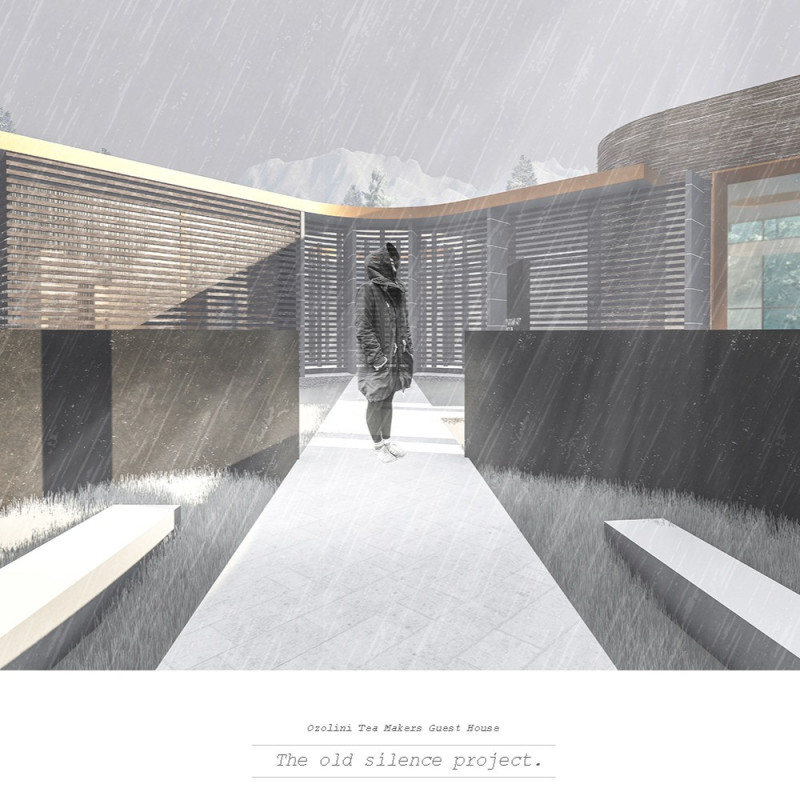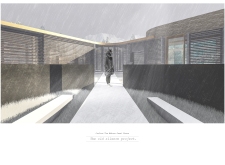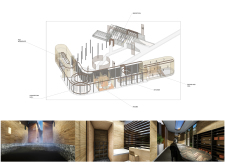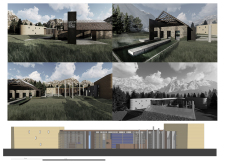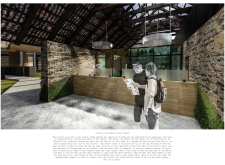5 key facts about this project
The Ozolini Tea Makers Guest House is located in a peaceful setting that encourages reflection and shared experiences. It is designed to be an immersive space that connects visitors with nature, placing a strong emphasis on silence and simplicity. The building links the past with the present, inviting people to engage with their surroundings as they enjoy the process of tea-making.
Conceptual Framework
The design focuses on building a relationship with the natural environment while using uncomplicated forms and materials. An old barn serves as the reception area, acting as a doorway between history and modern functionality. This choice helps illustrate the continuity that exists between the barn and the main building, where the transition reflects the flow of time.
Spatial Organization
The arrangement of the spaces promotes easy movement among guests. There is a pathway that runs from the barn to the main building, guiding visitors through the property and enhancing their connection to the landscape. Inside the main building, shared amenities like a kitchen, bathrooms, and spa areas encourage interaction, helping foster a community atmosphere that aligns with the guest house's focus on calmness.
Light and Experience
The meditation hall is positioned next to the kitchen, and it features large windows that let in natural light. This hall serves as a quiet space for reflection, where visitors can find peace. The light changes throughout the day, creating different moods that connect the space with the changing environment outside.
Workshop and Interaction
The tea workshop features a large table designed for group activities. This area helps build a sense of community, allowing guests to engage in the ritual of tea preparation together. It highlights the connection to nature, turning a regular activity into a shared experience. The layout encourages social interaction, making tea-making not just a process but a bonding activity among visitors.
The use of dark flooring in key areas reinforces the grounding nature of the space. It complements the experience of being in the guest house, inviting moments of quiet contemplation while enhancing the simplicity of the surroundings.


